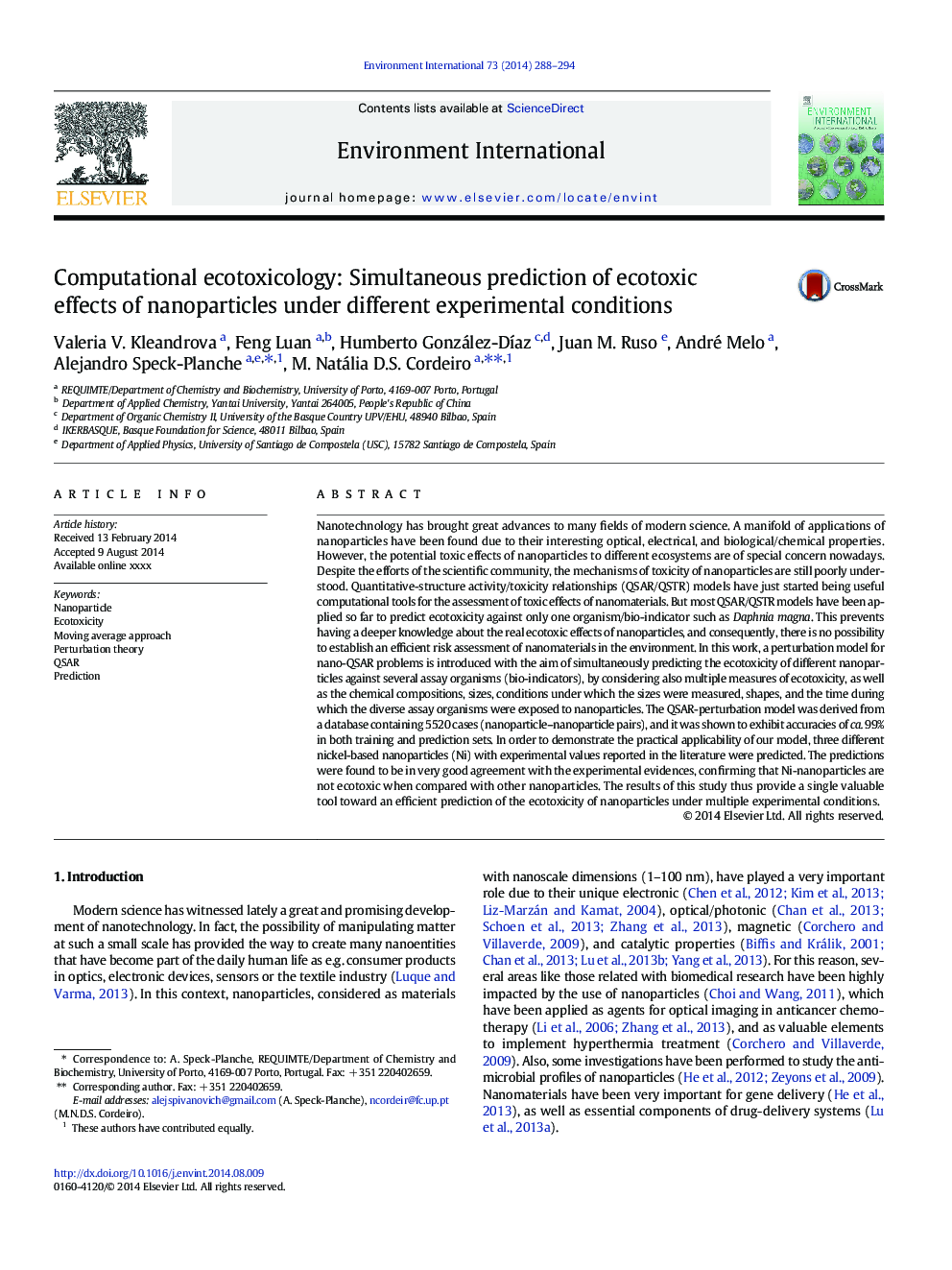| کد مقاله | کد نشریه | سال انتشار | مقاله انگلیسی | نسخه تمام متن |
|---|---|---|---|---|
| 6313819 | 1619055 | 2014 | 7 صفحه PDF | دانلود رایگان |
عنوان انگلیسی مقاله ISI
Computational ecotoxicology: Simultaneous prediction of ecotoxic effects of nanoparticles under different experimental conditions
دانلود مقاله + سفارش ترجمه
دانلود مقاله ISI انگلیسی
رایگان برای ایرانیان
کلمات کلیدی
موضوعات مرتبط
علوم زیستی و بیوفناوری
علوم محیط زیست
شیمی زیست محیطی
پیش نمایش صفحه اول مقاله

چکیده انگلیسی
Nanotechnology has brought great advances to many fields of modern science. A manifold of applications of nanoparticles have been found due to their interesting optical, electrical, and biological/chemical properties. However, the potential toxic effects of nanoparticles to different ecosystems are of special concern nowadays. Despite the efforts of the scientific community, the mechanisms of toxicity of nanoparticles are still poorly understood. Quantitative-structure activity/toxicity relationships (QSAR/QSTR) models have just started being useful computational tools for the assessment of toxic effects of nanomaterials. But most QSAR/QSTR models have been applied so far to predict ecotoxicity against only one organism/bio-indicator such as Daphnia magna. This prevents having a deeper knowledge about the real ecotoxic effects of nanoparticles, and consequently, there is no possibility to establish an efficient risk assessment of nanomaterials in the environment. In this work, a perturbation model for nano-QSAR problems is introduced with the aim of simultaneously predicting the ecotoxicity of different nanoparticles against several assay organisms (bio-indicators), by considering also multiple measures of ecotoxicity, as well as the chemical compositions, sizes, conditions under which the sizes were measured, shapes, and the time during which the diverse assay organisms were exposed to nanoparticles. The QSAR-perturbation model was derived from a database containing 5520 cases (nanoparticle-nanoparticle pairs), and it was shown to exhibit accuracies of ca. 99% in both training and prediction sets. In order to demonstrate the practical applicability of our model, three different nickel-based nanoparticles (Ni) with experimental values reported in the literature were predicted. The predictions were found to be in very good agreement with the experimental evidences, confirming that Ni-nanoparticles are not ecotoxic when compared with other nanoparticles. The results of this study thus provide a single valuable tool toward an efficient prediction of the ecotoxicity of nanoparticles under multiple experimental conditions.
ناشر
Database: Elsevier - ScienceDirect (ساینس دایرکت)
Journal: Environment International - Volume 73, December 2014, Pages 288-294
Journal: Environment International - Volume 73, December 2014, Pages 288-294
نویسندگان
Valeria V. Kleandrova, Feng Luan, Humberto González-DÃaz, Juan M. Ruso, André Melo, Alejandro Speck-Planche, M. Natália D.S. Cordeiro,